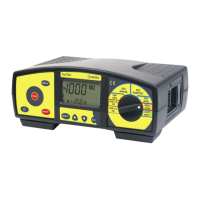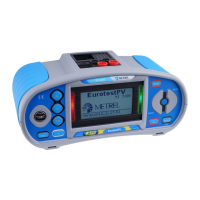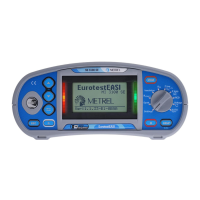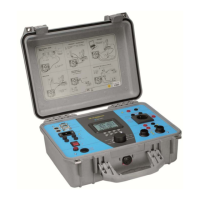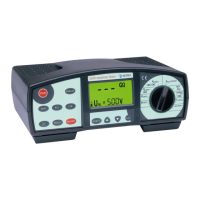MI 3000 EasiPLUS Measurements
41
5.4.2 The fault loop impedance test for RCD protected circuits
The fault loop impedance is measured with a low test current to avoid tripping the RCD.
This function can also be used for fault loop impedance measurement in system
equipped with RCDs which have a rated trip-out current of 10 mA and above.
Prospective fault current (IPFC) is calculated on basis of measured resistance as
follows:
PEL
N
PFC
Z
U
I
Where:
Nominal input voltage U
N
Voltage range
115 V
(100 V
U
L-PE
160 V),
230 V
(160 V U
L-PE
264 V),
For additional information concerning fault loop impedance measurement refer to
Metrel’s handbook Measurements on electric installations in theory and practice.
5.4.2.1 How to perform RCD trip-lock measurement
Step 1 Select the LOOP function with the function selector switch and use the /
keys to select Zsrcd sub-function. The following menu is displayed:
Figure 5.31: Trip-lock function menu
Step 2 Set the following measuring parameters:
Fuse type,
Fuse current rating,
Fuse trip-out time,
Impedance scaling factor (see chapter 4.5.2 Impedance scaling factor
adjustment
).
The complete list of available fuse types can be found in Appendix A.
Step 3 Connect the appropriate test leads to the instrument and follow the
connection diagram shown in figure 5.15 to perform RCD trip-lock
measurement (see chapter 5.3.6 Contact voltage). Use Help function if
necessary.

